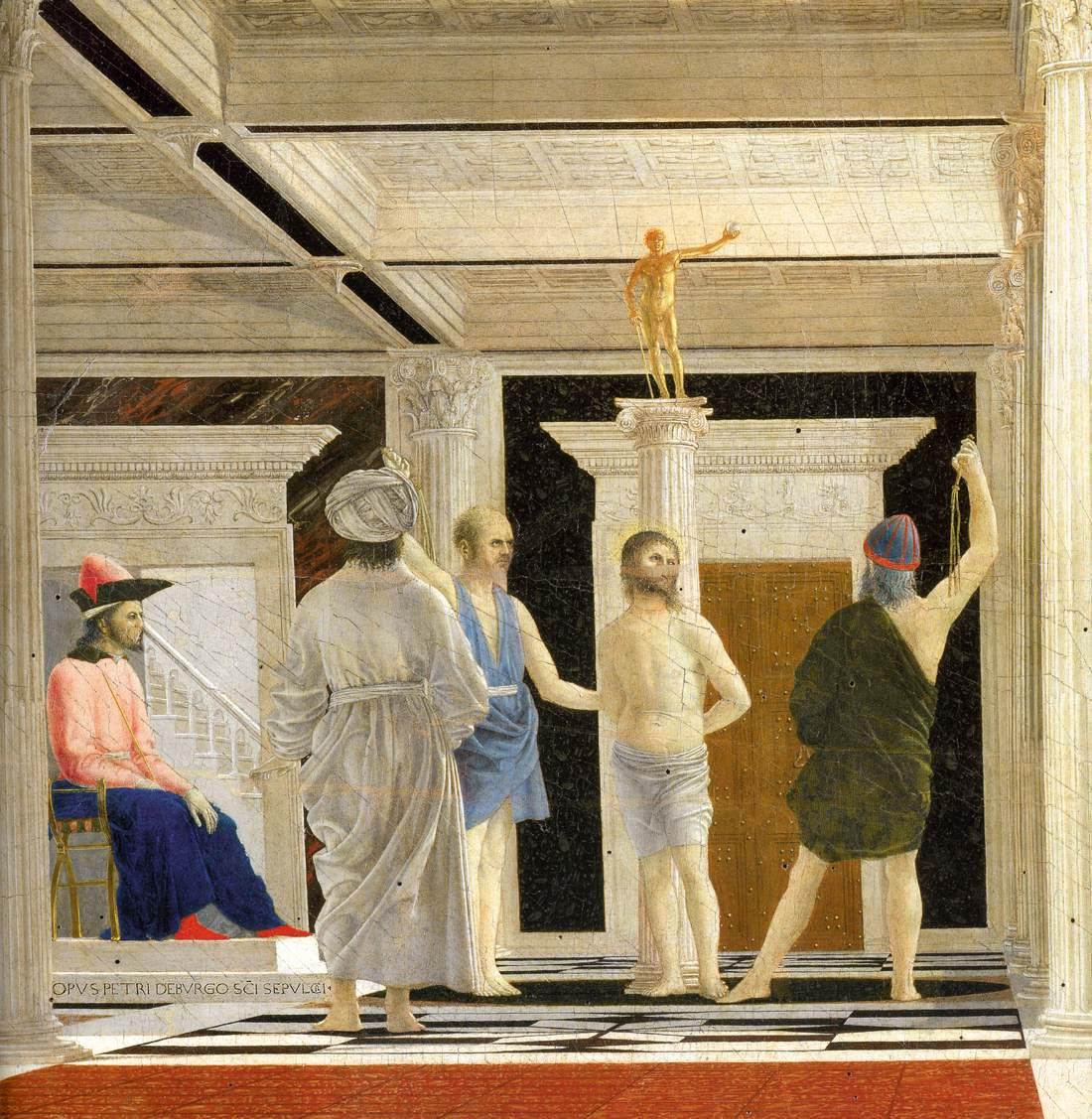
Register a SNAP EBT card with Amazon
The Flagellation (detail) by Piero della Francesca, c. 1455



This panel painting - one of his most famous - was executed by Piero during his first visit to Urbino. It contains subtle references to the situation of the time, which are very difficult to understand today. The theory that seems to be proposed most frequently is that the painting was commissioned as an attempt to favour the reconciliation between the two Christian churches, of the East and of the West, in view of the imminent Turkish attack on Constantinople. Both the presence of the character in the centre, dressed after Greek fashion, and an inscription on the frame ("convenerunt in unum") would seem to support this interpretation.
From the point of view of composition and perspective the painting is very rigorously planned. The composition appears to be divided into two scenes, separated by the column supporting the temple in which the Flagellation of Christ is taking place. On the right are three figures, arranged in a semi-circle; their identity is not certain. They are probably well-known characters of the time and, as such, they would be portrayed with their real features. The importance of the architecture in this painting, with the elegant classical temple, would suggest that Piero was in touch with contemporary theoretical writings. The onlooker must stand directly in the centre of the painting, for the composition is strictly unitarian, and this unity is achieved by the rigorous use of a single vanishing point. The painting is an ultimate example of Quattrocento linear perspective.
Even though he is working in a unitary space, Piero does not give up his interest in detail, such as the ceiling of the temple or the bronze sculpture on the column with its splendid reflection of the light. The magnificent damask garment worn by the character on the far right, with its contrast between blue and gold, reveals Piero's love for luxurious clothing and for the most fashionable styles, which many Florentine painters had eliminated entirely from their work.
c. 1455
Oil and tempera on panel, 59 x 82 cm
Galleria Nazionale delle Marche, Urbino
PIERO DELLA FRANCESCA (b. 1416, Borgo San Sepolcro, d. 1492, Borgo San Sepolcro)
The setting is the portico of Pontius Pilate's palace in Jerusalem, and scholarship suggests that Piero based details of the setting on descriptions of the palace and surrounding structures in Jerusalem. What has perplexed many observers is the placing of small figures of Christ and his tormentors at a distance at the left of the picture, while in the right foreground stand three large figures who seem to have no involvement with what is going on in the other half of the picture. Pilate, who observes the torture from a throne, is thought to be a portrait of Mahomet II, who conquered Constantinople.
The painting is signed on the lowest step of Pilate's throne.
Source: Web Gallery of Art